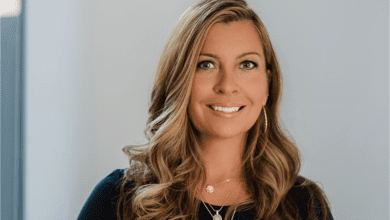What Underwriting Factors Impact my Construction & Manufacturing Insurance Rates in the Southwest?
From an insurance coverage perspective, the U.S. Southwest states of Nevada, Idaho, Utah, and Arizona top the list of the best states to own or operate manufacturing and construction businesses.
First, the weather provides a favorable outcome for businesses searching for manufacturing insurance or construction insurance coverage in these states, as the Southwest is typically not prone to catastrophic (CAT) weather events like other parts of the country.
While Arizona may occasionally experience a hail/severe weather event, it is not historically a CAT weather state property. Underwriting guidelines for this region are much more open than in other vulnerable areas of the country, which is good news for manufacturers and contractors wanting an expansive facility to match the wide open space of the state’s landscape. Insurance coverage for the property will likely be easier to attain because the roof will not be as exposed to convective weather.
In this article, we outline additional factors that affect insurance coverage and determine rates in the Southwest states of Nevada, Idaho, Utah, and Arizona.
Factor #1: The Property’s Construction Type
The material that makes up your manufacturing facility or construction company’s building and the building’s stability will both play a huge role in determining your commercial prooperty coverage rates.
These are three areas of focus an underwriter considers during an initial evaluation:
1. How fire-resistive is the construction of the property?
Of the six construction types used to rate property risks, fire-resistive is the most desirable. Fire-resistive buildings often have solid masonry construction with no less than a two-hour fire rating. It’s very favorable from a rating perspective when compared to frame construction, for instance, which sits at the opposite end of the spectrum.
2. What is the building’s protection class?
Simply put, this question is asking how well-protected the building would be in the event of a fire. Protection class is determined on a scale of one to ten, where one represents the highest level of fire protection and ten represents the worst. Buildings with a one ranking might be less than a mile from a fully-staffed fire department, for instance, whereas those with a ten rating might be miles away from an all-volunteer fire department without even a hydrant nearby.
3. What is the occupancy?
Occupancy is a crucial factor for an insurance provider, as they will need to approve who is utilizing the space and for what purpose. If the facility is rented, an underwriter will need to determine if they would also insure the business renting the space before approving the coverage of the building itself.
Keep in Mind: Often, the answer to who is occupying the space will matter more to
an insurance underwriter than how many there are.
Factor #2: A Positive Outlook for the Construction Industry
The growing population and economy in the U.S. Southwest is translating into an increased demand for building construction. That’s positive news for commercial and residential construction companies from a business perspective, as well as from an insurance standpoint.
Southwest states such as Nevada, Idaho, Arizona, and Utah have more favorable construction defect legislation and are less likely to incur a class action lawsuit due to a construction defect, so carriers are more willing to write a coverage policy for residential and commercial construction classes.
Get insights like this right in your inbox. Subscribe to the Central Blog below.
Factor #3: The Type of Products Being Manufactured
The Southwest region is considered America’s new factory hub. Before insuring a manufacturing structure, an insurance carrier will analyze the products being manufactured on-site, as different products can result in a higher chance of loss.
What’s more, a higher-hazard product will have a greater chance for recall and risk exposure. For example, an ice cream company might be a better risk to insure than a plane engine manufacturer.
Outcome-Related Risks
In many cases, knowing what you manufacture in your facility is only the first step. Carriers often need to get even more granular and determine if the manufacturer they’re insuring is developing Tier 1, 2, or 3-level products.
This product tiering system helps insurers determine the amount of risk associated with the products developed on-site at their policyholder’s facility. Facilities marked Tier 1 manufacture the final product, Tier 2 manufacture products in the subassembly category, and those in Tier 3 handle raw materials.
Carriers are most likely to underwrite the products that are further removed from the final end-use or application, such as those in Tier 2 or 3, as these products themselves are less likely to fail or cause issues once released to the public, thereby reducing the risk to the insured.
Factor #4: Premises and Operations Exposure
Another factor underwriters consider when determining rate is the premises and operations exposure, which arises out of the insured’s ownership, maintenance, and overall use of their space. When evaluating this risk, underwriters will consider the condition, degree of foot traffic, presence of an attractive nuisance (bodies of water), etc. More specifically, they will consider questions like:
- Is there good housekeeping?
- Are the combustibles kept separate from sources of ignition?
- What’s the owner’s attitude toward an underwriter’s visit (welcoming and collaborative versus combative and uncooperative)?
The answers to questions like these can help an underwriter determine how the space will fare when faced with a risk.
Learn more: Manufacturing Insurance: Loss Control Tips to Protect Your Business
Excellence is Our Policy
Let Central Insurance guide you through the process of a manufacturing or construction insurance quote in the Southwest region. One of the simplest ways to stay on top of state-specific trends and reduce your rates is to work closely with a local, qualified insurance agent.
Known for delivering best-in-class service to our policyholders, they are focused day in and day out on helping business owners navigate the ever-evolving landscape of commercial insurance and are immersed in their communities.
For that reason, whether you’re opening a new small business, relocating to the Southwest, or simply looking to understand your commercial rates better, your agent will be your best source of advice and insight.



